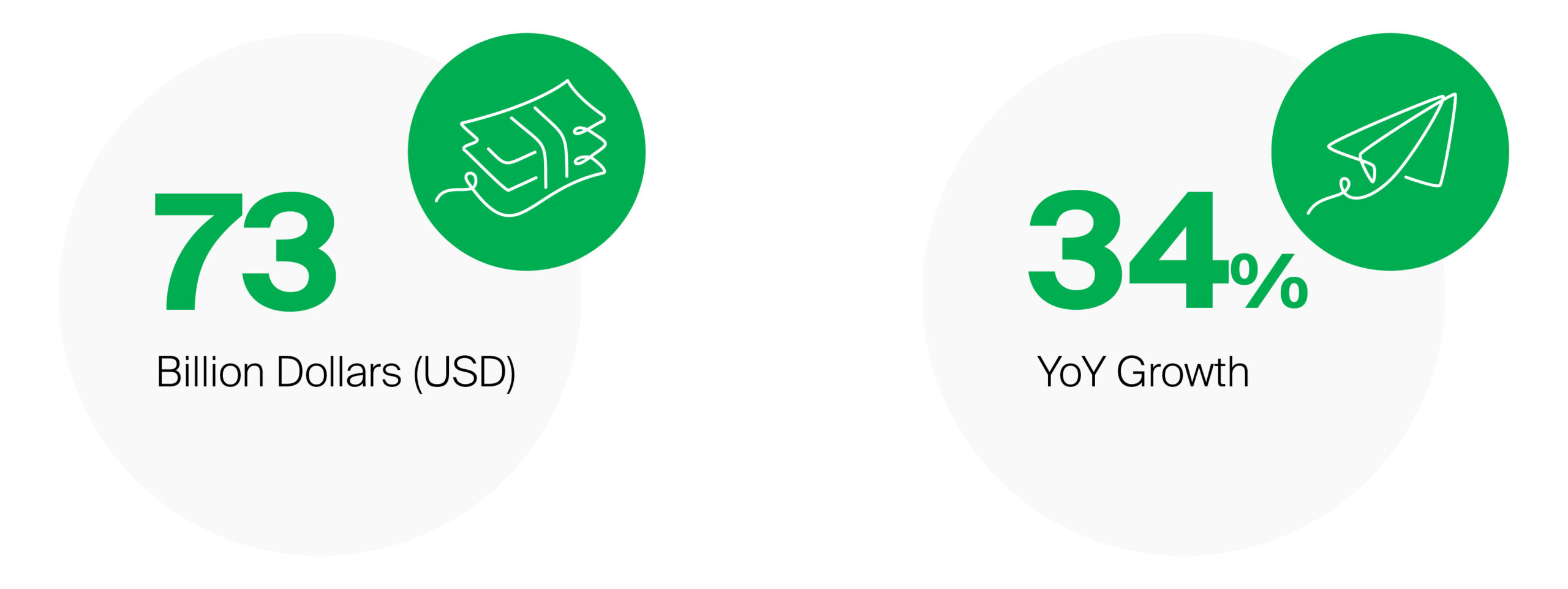While international A2P traffic monetisation has not been the MNOs’ priority, it is deservedly considered a prime revenue source. This means that domestic A2P messaging often gets overlooked while, in our experience, contributing roughly 80% of premium traffic travelling through operator networks.
With consumers expecting superior levels of convenience, brands of all sizes are expanding their adoption of transactional and promotional messaging. And just like with the international traffic, grey routes, spam and scams endanger operator revenues either by denying them direct income or ruining their reputation with the subscriber base.

Properly managing international A2P messaging might be tough, as operators need to monitor all inbound traffic, staying aware of the message profiles of each service that sends SMS to MNO’s network. And for domestic premium messaging, you must do all that times four! As a result, even if the operator has a dedicated domestic A2P team, they tend to be overwhelmed with the multitude of originators, especially considering that less scrupulous members of the local ecosystem might also resort to tricks like SIM boxes.
To determine the scope of work for MNO’s domestic A2P team, we need to take a closer look at the challenges accompanying national premium traffic monetisation.

The benefits of traffic profiling
The first challenge to overcome would be losing money due to illicit traffic, with vast volumes of local A2P SMS being terminated as P2P, and the MNO will need more visibility in terms of the types and origins of traffic travelling the network. The most basic decision to solve this type of situation would be controlling the kinds of connection each respective traffic type has access to. Knowing the protocols used to deliver messages and having a clear picture of traffic types, we can track its origins and be on the lookout for potential manipulations. By further analysing the message contents and creating a database of message profiles, MNO gains an opportunity to block illicit traffic, regaining full control over the network.
However, the price difference between A2P and P2P is not the only factor that hinders proper monetisation. While eliminating the illegal traffic and redirecting all messaging via proper routes is great, another benefit of the newly regained transparency would be the ability to discern between promotional messaging and transactional SMS used to deliver one-time-passwords, balance updates and more. Even though setting up a flat pricing rate for all traffic types might appear attractive, all these message types can and should be priced differently. More so, your offering can gain additional flexibility by accounting for the size and type of the enterprise and its messaging volumes, making the pricing model as attractive as possible.
Operational risks
The abundance of spam and scams travelling the network is another challenge: it is only a matter of time until the subscribers suffer from the actions of cybercriminals, and their carrier would be the most likely to blame for their trouble, increasing the immediate possibility of churn. Moreover, subscribers losing trust in SMS as a viable communication channel means that in addition to migrating to a different operator, they most likely will abandon SMS as their preferred A2P channel, and the enterprises will follow, aiming to stay in touch with their consumers via their preferred medium. This results in a double blow: a decrease in the subscriber base and the loss of A2P SMS revenues. The added benefit of securing the network and tuning up the pricing models would be customer satisfaction – both on the side of your enterprise clients and the network subscribers.
The final factor contributing to the complexity of managing domestic A2P traffic is that operators usually need aggregator support to establish organised connectivity with enterprise clients. On the one hand, aggregators collecting the traffic for the operators prevent the utter chaos of trying to connect to thousands of individual enterprises with their unique messaging needs. Conversely, the less scrupulous aggregators can be tempted to abuse their position using traffic blending, forged delivery reports, and other insidious techniques, acting against the operator’s best interests.
Securing the revenues
All in all, fully monetising domestic A2P messaging requires fitting instruments and knowledge. Without a reliable messaging partner, operators must invest in expanding their staff and possibly even develop in-house protection solutions. However, by cooperating with the industry experts like GMS, MNOs can get the most out of our vast messaging experience, extensive knowledge of bypass types, fraudulent practices, and a library of message profiles.
In addition to setting up content rules for automated traffic profiling and filtering and introducing an exhaustive proactive testing regimen, we help establish direct connections between MNOs and enterprises. This helps streamline the message routing and significantly improves the overall climate within messaging ecosystem, as all parties gain an opportunity to know each other and find common goals to move towards.
If you would like to learn more about our Domestic Traffic Monetisation, please do not hesitate to contact our experts today!

